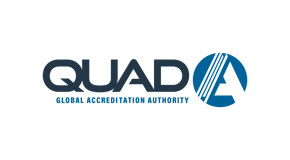QUAD A requirements prioritize patient safety by mandating that facilities clean and disinfect the entire operating room suite on a regular schedule to prevent cross-contamination.
QUAD A defines the Operating Suite as:
- Operating Room
- Prep/Scrub area
- Clean and/or Dirty Room
- Post-Anesthesia Care Unit (PACU)
A common area of confusion for many facilities is the distinction between room turnover and terminal cleaning, what must be cleaned, and what the facility is responsible for, even when using contracted cleaning services.
Room turnover involves cleaning the operating room between cases, whereas terminal cleaning is a more thorough, end-of-day process that encompasses the entire operating suite. Because QUAD A uses the terms "procedure room" and "operating room" interchangeably, it's crucial for facilities to understand the specific expectations surrounding terminal cleaning.
Terminal cleaning must include cleaning and disinfecting of the following:
- horizontal surfaces (high- and low-touch) and fixed equipment in the room, including booms and wheels of any equipment (e.g., carts)
- vertical surfaces such as walls and windows, as needed, to remove visible soiling
- ventilation (ducts)
- handwashing sinks, scrub and utility areas/sinks
- entire floor, including baseboards.
- take care to move the operating table and any mobile equipment to make sure to reach the floor areas underneath.
Additionally, facilities must thoroughly clean and disinfect all portable patient-care equipment that is not stored within the operating room before it is removed from the operating room (e.g., suction regulators, compressed gas tanks, lead gowns).
QUAD A does not mandate specific cleaning products but requires that those used comply with QUAD A Standard 7-F-2, meaning they must be intermediate-level, medical-grade disinfectants that are EPA-registered as virucidal, bactericidal, tuberculocidal, and fungicidal.
The accredited facility is ultimately responsible for all housekeeping and cleaning services, whether performed in-house or by a contracted service provider. The same standards for patient safety and quality of care apply in both cases. Contracted services are considered part of the facility, and all applicable QUAD A standards must be met.
Facilities must have policies and procedures that clearly outline the terminal cleaning process, including those areas and equipment that are not terminally cleaned. Staff should be able to explain this process during a survey. A copy of the cleaning service contract, whether through the building tenant or another vendor, should be kept on file and readily accessible.
The facility must also have a process to regularly evaluate contracted services for safety, effectiveness, and compliance with the agreement. This may include maintaining the cleaning logs as part of infection control documentation. If terminal cleaning was not documented the previous day, it is best practice to perform a full terminal clean before starting procedures.
When multiple staff are involved in cleaning, roles and delineated cleaning responsibilities must be clearly defined for all environmental surfaces and non-critical equipment (both stationary and portable).
Important practices to minimize infection risk and cross-contamination:
- Use supplies and equipment dedicated for the OR (e.g., mops, buckets).
- Use fresh mops/floor cloths, as well as mopping solutions, for every cleaning session, including between procedures.
- Use fresh cleaning cloths for every cleaning session, replacing them regularly during cleaning and never reusing them after dipping into cleaning and disinfectant solutions.
Resources:
- Ambulatory Surgery Center Toolkits
- CDC Environmental Cleaning Procedures
- CDC Environmental Checklist for Monitoring Terminal Cleaning
- OSHA References for Cleaning Hazards and Solutions
We hope this information clarifies what is needed for facility compliance with our standards related to environmental cleaning. Should you have any questions, please email them to standards@quada.org.
Since 1980, QUAD A (a non-profit, physician-founded and led global accreditation organization) has worked with thousands of healthcare facilities to standardize and improve the quality of healthcare they provide – believing that patient safety should always come first.


